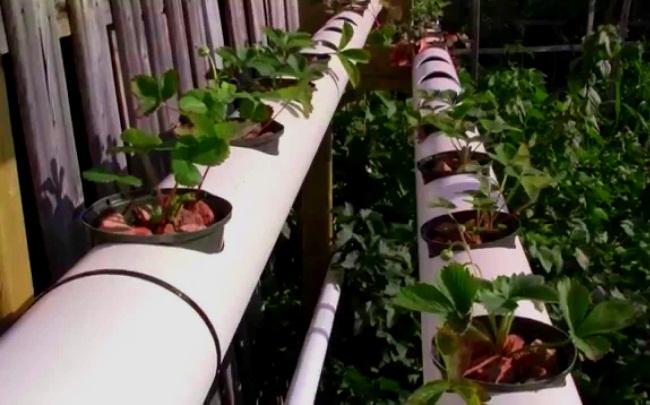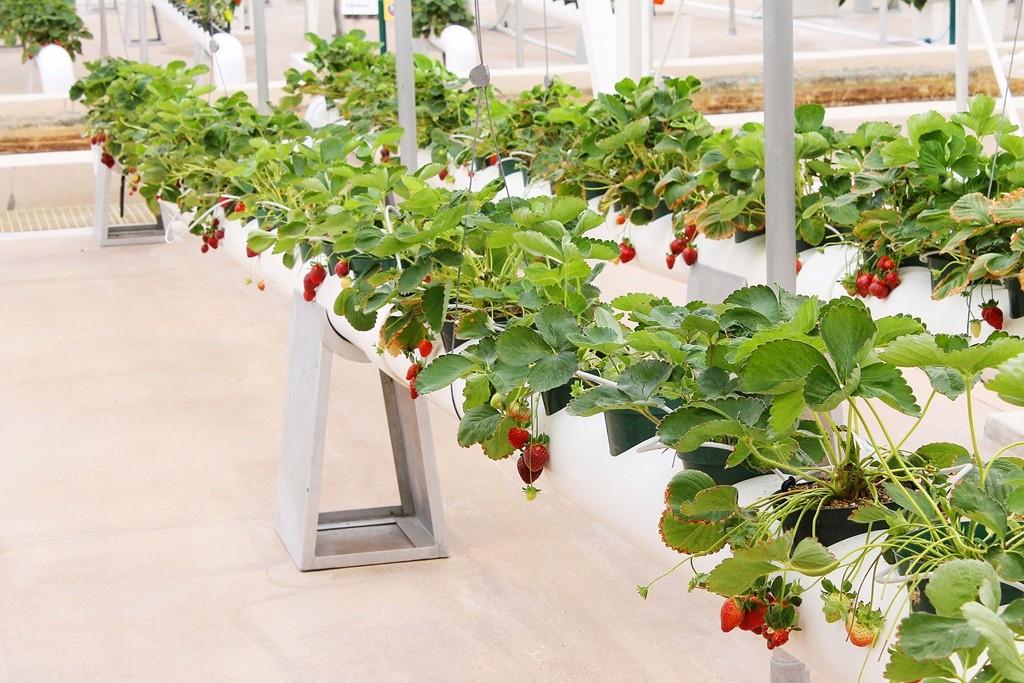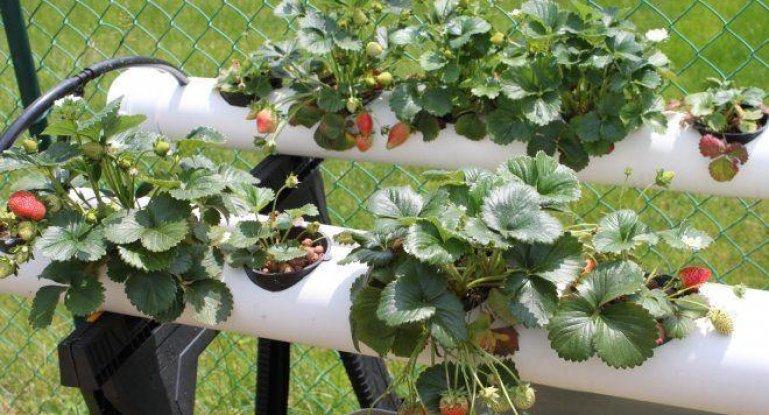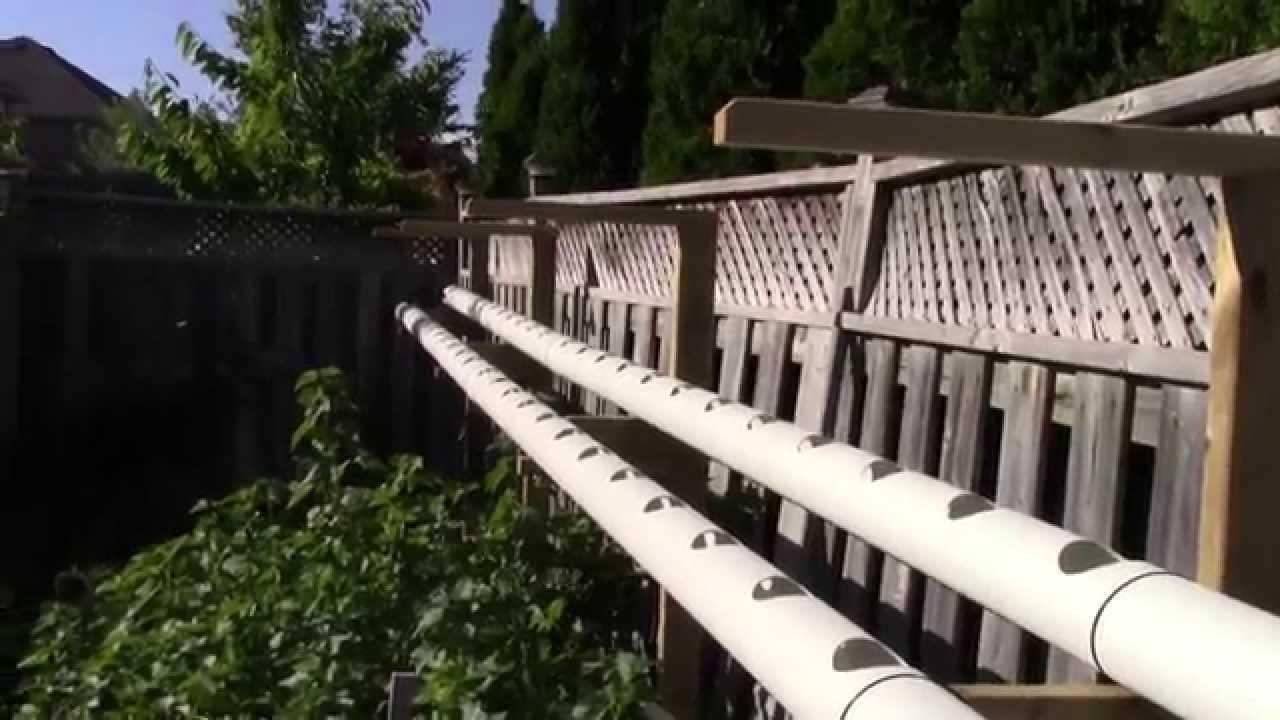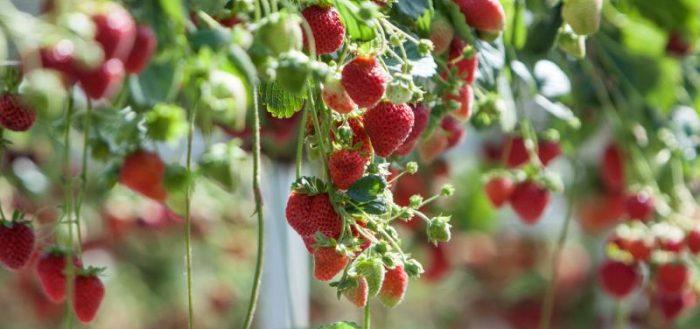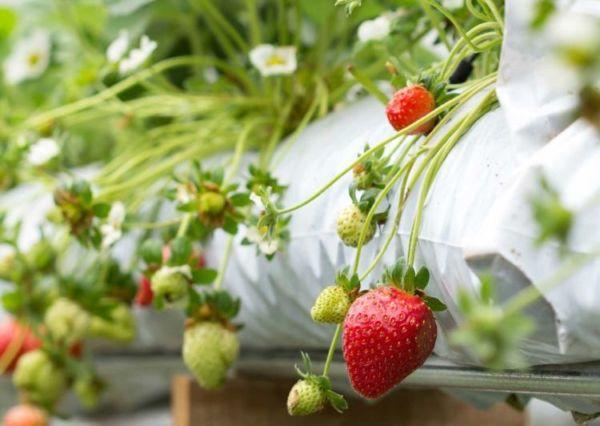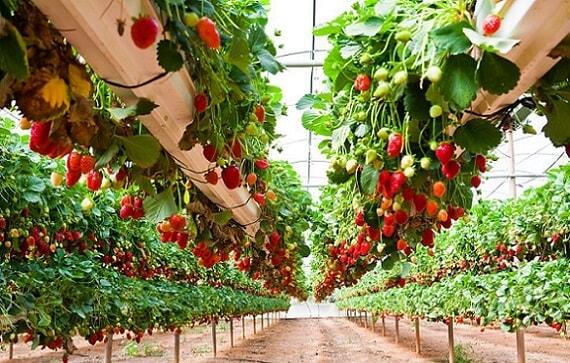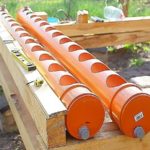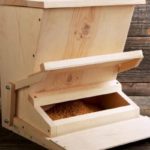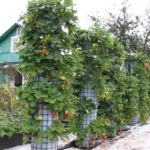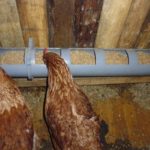Every gardener strives to use the local area as rationally as possible. But, for example, having harvested strawberries at the beginning of summer, he will no longer be able to use this area for other plantings during the season. One of the options for economical use of territory is to grow strawberries horizontally in PVC pipes. Let us consider further the nuances of this procedure.
- Specifics of cultivation
- Advantages and disadvantages
- How to build a structure
- Necessary materials
- Selecting a location
- Assembling the installation vertically
- Preparing pipes for horizontal construction
- Features of growing strawberries
- Variety selection
- Planting seedlings
- Watering
- Top dressing
- Pest and disease control
Specifics of cultivation
When growing strawberries using this method, seedlings are planted in large-diameter horizontal sewer pipes. Such beds look aesthetically pleasing and do not take up much space. But if such a structure is located in a greenhouse, the seedlings may become infected with fungus. To avoid this, before planting strawberries, the bushes and soil must be treated with antifungal drugs.
Important! Treatment with fungicides is a necessary procedure, since if infected, the entire soil will have to be changed, dismantling the entire structure.
Advantages and disadvantages
There are not only pros and cons to using each method. Let's look at the positive and negative aspects of growing strawberries in pipes.
Advantages:
- saving territory;
- the ability to grow berries throughout the year;
- quick assembly and disassembly of the structure;
- no need for weeding;
- the berries are not contaminated by the soil;
- inaccessibility to pests (slugs).
Flaws:
- rapid soil depletion;
- some costs are required to create the structure;
- the need to insulate the device for the winter.
Despite the fact that there are some disadvantages, this method of growing strawberries still has more advantages. Having spent once on creating the device, the gardener will be able to use it for a long time to plant delicious berries.
How to build a structure
When planting strawberries in sewer pipes, the preparation process takes a lot of time. To do everything, you will need the following tools: drill, tape measure, hacksaw.
In addition, you need to purchase materials that are usually sold in hardware stores.
Necessary materials
A bed made of plastic pipe is built using the following available materials:
- PVC pipes with a diameter of 150 millimeters;
- plugs with the appropriate diameter (2 per segment);
- watering hose with a diameter of 30-40 millimeters:
- plugs for it of the appropriate diameter;
- water containers;
- pump with automatic watering.
A pump will be needed to irrigate large strawberry plantations. If a small area is used, a tank from which water will flow by gravity is sufficient.
Selecting a location
The design with strawberries must be placed in a bright place. In addition, the bushes should be well ventilated. This is necessary to prevent their infection by fungal diseases and damage by harmful insects. This is especially true when growing strawberries in a greenhouse.
Some gardeners install a structure with strawberries near the fence or directly on it. This can be done provided that it is located on the sunny side of the site. In addition, pipes with berry bushes are placed along the perimeter of beds with other plants.
Assembling the installation vertically
To build a structure from PVC pipes, the following steps are performed:
- Using a drill with a large nozzle (at least 7 centimeters), holes are made in the pipe. The first of them is at a height of 20 centimeters from the surface of the earth. To ensure that each planted bush has enough space to develop, they are planted in a checkerboard pattern, at a distance of 20 centimeters from each other.
- The watering hose is cut off (15 centimeters longer than the pipe) and holes are made in it.
- To prevent holes in the watering pipe from becoming clogged, it must be wrapped in nylon.
- A plug is attached to the bottom of the hose (to prevent water from going into the ground).
- The bottom of the large pipe is secured with a plug with holes.
- The device is installed vertically. For stability, it must be lightly dug into the ground.
- Drainage made of small pebbles or broken bricks is laid at the bottom. It will give the structure stability and will not allow moisture to stagnate in the soil.
- A watering hose is installed in the center of the main pipe.
- The soil is filled up.
Note! The earth is poured into the pipes in stages. It must be compacted thoroughly, otherwise voids will form that negatively affect the development of strawberries.
Preparing pipes for horizontal construction
To grow juicy strawberries horizontally, pipes are prepared in a similar way. But, unlike the previous method, holes are made only along the upper horizontal of the pipe. Their diameter should be at least 15 centimeters, the distance between them should be 20 centimeters. Further steps step by step:
- Plugs are made at the ends of the pipes. If there are no special ones, then they can be wrapped in film and tied tightly with ropes.
- The watering tube is prepared: small holes are made along its entire length to allow water to escape into the ground. Then it must be wrapped in light material, for example, nylon, so that the holes do not become clogged with earth. A plug is placed on one side.
- Holes are made in the center of the plugs through which the prepared watering hose is installed. It should be longer than the sewer pipe.
- Drainage is poured through the “windows”, which is distributed evenly over the entire bottom.
- The soil is poured out in the same way.
The structure is ready. Strawberry seedlings are planted in the holes. A hose from the pump is connected to the end of the protruding watering tube and watering is carried out. If the structure consists of several sewer pipes, then the watering hoses are connected to each other by adapters.
Features of growing strawberries
Planting of strawberries begins in the spring, when the threat of frost disappears. If a gardener wants to grow it in a greenhouse, then this can be done all year round. The air temperature should be at least 20 °C, optimally: from 23 to 25 °C. When growing strawberries in winter, lighting will be required.
Variety selection
To grow strawberries in PVC pipes, varieties that are resistant to fungal diseases are selected. The most popular of them:
- Yellow miracle;
- Troubadour;
- Alba;
- Oscar;
- Queen Elizabeth;
- Baby elephant;
- Gigantella.
When a gardener has mastered the technology of growing strawberries in tubes well, he can use other varieties in the future.
Planting seedlings
Before pouring soil, it must be disinfected using industrial preparations or traditional methods. Initially, it is poured into the structure in such a way that there is room for planting seedlings. Then proceed as follows:
- a small hole is made in the hole of the pipe;
- strawberry roots are treated in a growth stimulator;
- straighten the root system, plant the seedlings in the holes, sprinkle with soil up to the root collar.
For the first few days, the structure with strawberries is shaded from the sun. When constructing the structure vertically, marigolds or marigolds can be planted and grown in the lower holes, which will repel harmful insects.
Watering
Since there is little earth in the pipes, it quickly dries out from the sun. Therefore, seedlings need to be watered frequently. The need to moisten the soil can be seen through the planting holes. When the soil has dried 2-3 centimeters, watering is carried out through hoses pre-installed in the structure.
Important! It is necessary to ensure that the soil does not become waterlogged, which can lead to fungal infections.
Top dressing
Strawberries grown in pipes need to be fertilized more often than those planted in the usual way on the site. This occurs because the soil in the structure is quickly depleted. The bushes are fed once a week with complex mineral fertilizers through a watering hose. To prevent burns to the roots, the soil is first slightly moistened with water.
Pest and disease control
Strawberries grown in pipes are not subject to invasion by slugs and snails, but various insects can damage the plantings. To get rid of them, use various insecticides according to the instructions.
Plants can become susceptible to disease, first of all, from excess moisture. If rot is detected, it is necessary to trim the damaged plants to healthy parts, then treat the bushes and soil with approved antifungal drugs according to the instructions.
At the initial stage, growing strawberries in PVC pipes is a little labor intensive. But by creating a structure, the gardener will be able to get a harvest without using a large planting area. In addition, the site takes on an original, unique look.

